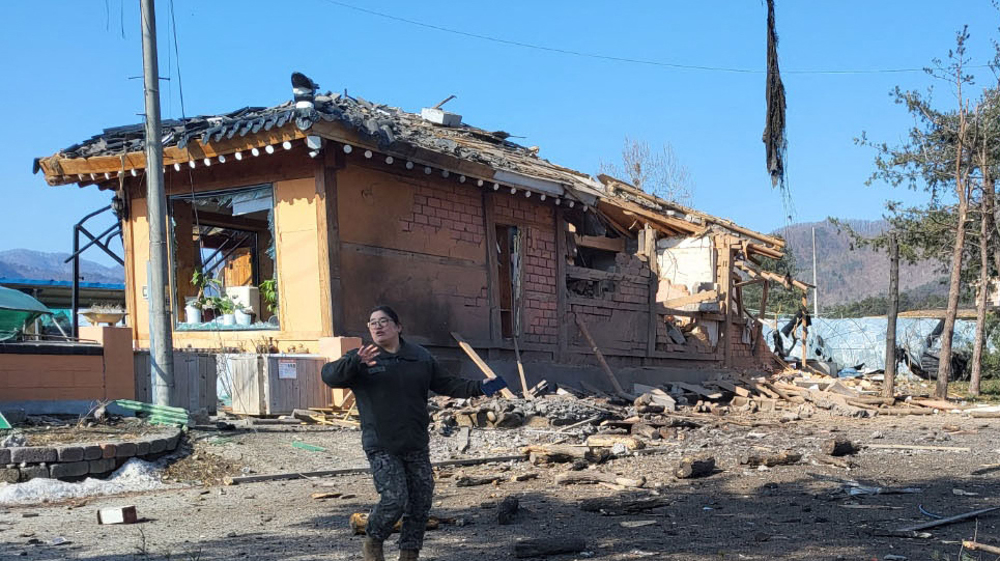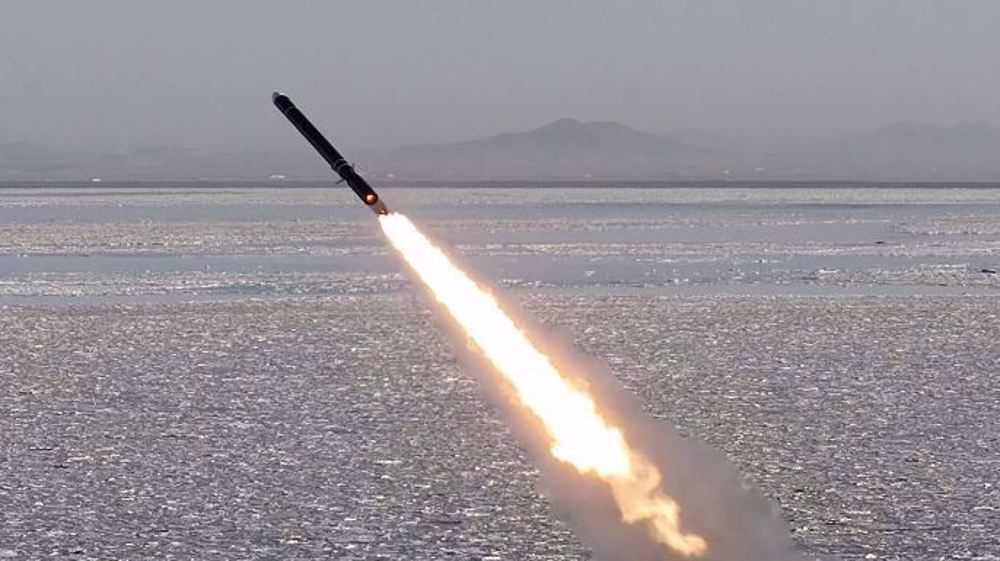North Korea test-fires short range ballistic missile: Seoul’s military
North Korea has reportedly test-fired a short-range ballistic missile a day after Seoul and Washington reached a controversial agreement on the deployment of an advanced US missile system to the Korean Peninsula.
The South Korea military said in a statement on Saturday that the missile was launched from a submarine in the waters east of the volatile peninsula at around 11:30 a.m. local time (0230 GMT).
“The North launched what was believed to be an SLBM (submarine-launched ballistic missile) from waters off the (northeastern) port of Sinpo,” the South’s Defense Ministry said in a press statement, without elaborating on how far the missile traveled and where it landed.
The ministry, however, said that the launch appears to have failed in the early stages of flight.
North Korea had launched an SLBM in April, in what the US and South Korea described as a failed test.
Pyongyang is under harsh UN sanctions for its nuclear and missiles tests. It is banned by UN resolutions from any use of ballistic missile technology.
However, North Korea says it has strengthened its nuclear might due to Washington’s pressure and threats, stressing that it cannot give up on its nuclear and missile tests with the “US gun to its head.”
The country believes Washington has joined hands with its regional allies to topple the government in Pyongyang.
Japan was quick to react, condemning North Korea’s test-firing of the submarine-launched missile as a “clear challenge to UN Security Council resolutions.”
“We should strongly condemn the launch by working with the international community,” said Japanese Prime Minister Shinzo Abe.
The new launch came a day after South Korea and the United States jointly announced that they had agreed to station the Terminal High Altitude Area Defense (THAAD) missile system in the wake of what they called threats posed by North Korea.
THAAD is designed to shoot down short, medium and intermediate ballistic missiles in their terminal phase, using a hit-to-kill approach.

The joint statement further said the deployment was solely meant to deter North Korean “threats,” but China and Russia – which had already voiced opposition to the plan – reacted angrily, saying such a move would undermine stability in the already restive region.
Beijing and Moscow view such a deployment as an attempt to put their military facilities within the range of US radars.
Shortly after the agreement was announced, Beijing said the move would “seriously damage the strategic security interests of countries in the region, including China,” urging both the US and South Korea to reconsider the decision.
The Chinese Foreign Ministry also summoned US and South Korea ambassadors in the country to a lodge a protest against the agreement.
In a similar stance, Moscow also warned that the deployment could have “irreparable consequences,” saying the US and its partners would disrupt “strategic balance in the (region) and beyond” by the planned deployment.
The THAAD agreement came a day after the US had imposed unilateral sanctions on North Korean leader Kim Jong-un for the first time over rights violation accusations.
Pyongyang warned that the new US sanctions “crossed a red line” and amounted to “an open declaration of a war.”
VIDEO | Press TV's news headlines
UN experts: Israel again 'weaponising starvation' in Gaza
UNRWA: Israel's West Bank aggression aligns with annexation 'vision'
VIDEO | Destruction of Barquq Castle in Khan Yunis
VIDEO | Gaza ceasefire has stalled, and Trump's warnings
Syrian regime declares curfews in several regions
Sudan takes UAE to UN court over 'complicity in genocide'
Trump's threats will embolden Israel to ignore ceasefire: Hamas













 This makes it easy to access the Press TV website
This makes it easy to access the Press TV website